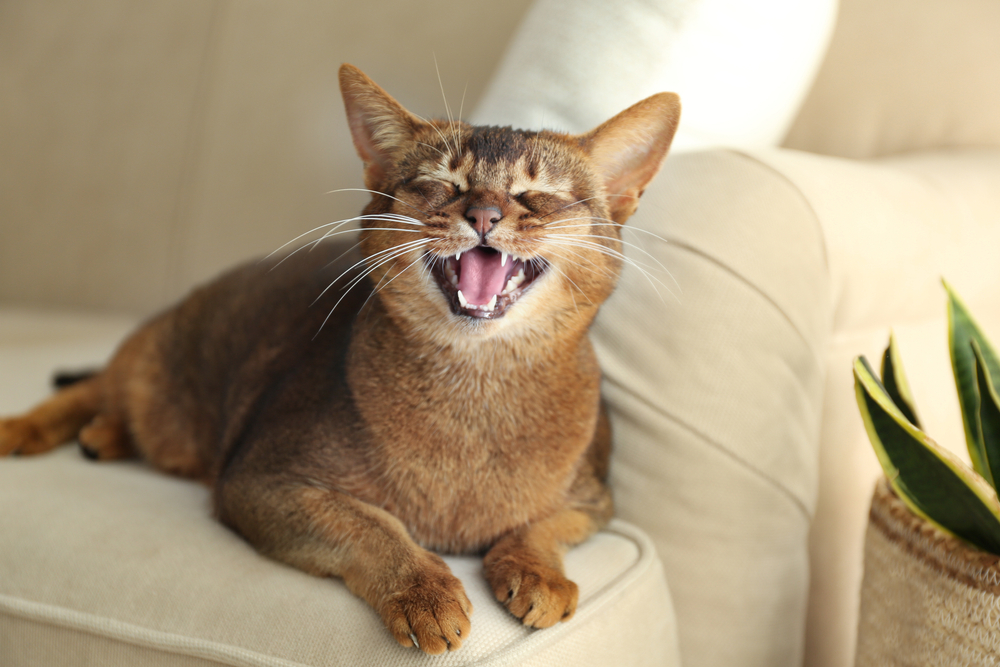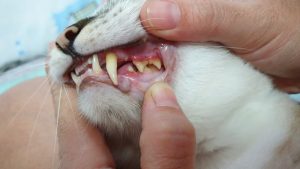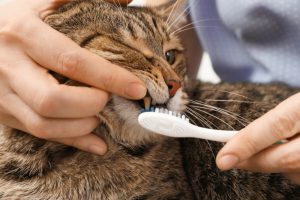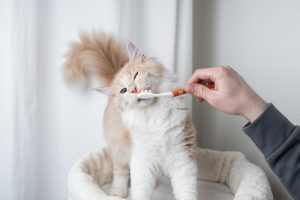
Keeping a cat as a pet and taking proper care of it is an easy job – if you know-how. As a cat-owner, you probably know all about feeding and grooming your pet, but did you know that your cat’s teeth require special care too? Vets report that dental health is one of the most neglected areas of proper feline care. Fortunately, caring for a cat’s teeth isn’t that hard. And in this guide, we’re going to tell you exactly how to take care of a cat’s teeth.
Why You Should Look after Your Cats Teeth
But before we get into that, we want to stress how important it is to care for your cat’s teeth. Statistics say that over 90 percent of all domestic cats suffer from some form of dental disease. Just like humans, cats can get gum disease and tooth decay. Tartar and plaque can build upon their teeth, and your cat can get bad breath. But caring properly for your cat’s teeth means you can avoid all these problems.
Teeth are very important to cats as these animals are carnivores and subsist entirely on meat. Without strong, sharp teeth, they won’t be able to eat meat at all. It’s very hard to tell that your cat has a dental problem because, as predators, cats don’t show that they’re in pain to avoid appearing vulnerable. But if you see your cat become more aggressive, or sleep more, then it could be a sign it’s suffering from a dental problem.
But if you take care of your cat’s teeth regularly, you won’t have to worry about it developing any tooth problems. So let’s get started with our guide to see how you can take proper care of your cat’s teeth.

Checking Your Cat’s Teeth For Danger Signs
While it’s important to take your cat to the vet regularly, you can also keep an eye on your cat’s teeth between visits to make sure everything is in good condition. If you detect bad breath on your cat, it could be an indication that your cat has a dental problem. However, bad breath can also be caused by digestive problems in your pet, so be sure to consult your vet to make sure what’s causing the problem.
While bad breath isn’t hard to detect, you’re going to have to take a closer look into your cat’s mouth if you want to see other signs of dental disease. A cat’s gums can provide valuable clues into the condition of its teeth. If you see ulcers on the cat’s gums, then you should immediately take it to the vet and have it checked. Another sign to look for is inflammation in the cat’s gums. Gum inflammation can result in gum disease, which could eventually lead to tooth loss. Bleeding from the gums or a deep red line on the gums could be another sign of dental disease.
Although a cat’s gums are a good indicator of problems with a cat’s teeth, there are other more obvious signs that your cat has some dental issues. For instance, if your cat is drooling excessively or is pawing continually at its mouth, it could be a sign of dental problems. Or, if the cat refuses to eat or has difficulty in chewing, this could be another sign that there’s something wrong with its teeth.
Now that you know how to tell if something’s bothering your cat because of its teeth let’s look at how you can prevent these kinds of problems in the first place.

Brushing Your Cat’s Teeth
If you brush your cat’s teeth every day, they will be safe from many dental problems. But brushing a cat’s teeth isn’t an easy task because it’s not an activity that is natural for the cat. So if you want to know how to take care of a cat’s teeth, it’s essential to know how to brush its teeth properly.
Your cat isn’t used to having anything put into its mouth, so first, you’re going to have to get it accustomed to the new sensation. Take your finger and gently massage your cat’s gums for a while. Once the cat realizes that you’re not trying to hurt it and is comfortable with your finger, it’s time to move to the next step.
It’s important to note that normal toothpaste isn’t good for cats. Instead, you can buy a veterinary toothpaste that is designed especially for cats. The fluoride and other chemicals in conventional toothpaste can be harmful to cats, so veterinary toothpaste doesn’t have these chemicals. You’re going to need to get your cat used to the flavor and smell of the veterinary toothpaste, so let the cat smell the toothpaste and put a very small quantity of it into the cat’s mouth. Once the cat is used to the veterinary toothpaste, you can proceed to the next step.

Try to buy a toothbrush that has very soft bristles, or even a toothbrush that is specially designed for cats. A cat has delicate gums, so you need to take care not to damage them in the course of brushing. Once you’ve found an appropriate toothbrush, apply some of the veterinary toothpaste to it and gently brush the cat’s teeth and gums with it.
After the brushing is complete, give your cat a reward to thank it for being so patient. Rewarding your cat with treats will make future brushing operations much easier as the cat will have something pleasant to look forward to afterward.
You can brush your cat’s teeth daily to keep them in good shape. Brushing regularly will help prevent plaque on your pet’s teeth, which can lead to more serious dental problems.

Plaque On A Cat’s Teeth
Plaque is a yellow coating that forms on teeth due to the action of bacteria on food particles in a cat’s mouth. If the plaque isn’t removed by regular brushing, it can become a hard yellow deposit. So, brushing regularly is essential to preventing plaque from accumulating on your pet’s teeth.
While plaque may seem to be harmless, this isn’t the case. In fact, plaque is one of the major causes of gingivitis or gum disease, and it can also cause all kinds of infections in a cat’s heart, lungs, kidneys, and liver. Fortunately, all you have to do to keep plaque at bay is brush your cat’s teeth regularly.
Conclusion
To keep your cat healthy, you need to take care of its dental hygiene. In doing so, you are going to avoid the accumulation of plaque on its teeth and the eventual formation of calculus or tartar. If you don’t know how to prevent these problems from occurring, brushing a cat’s teeth daily is the answer. Doing this will allow you to keep your cat healthy by preventing oral problems that can lead to infections.
FAQ
Why is it Important to Brush Your Cat’s Teeth?
Brushing your cat’s teeth is important because it gets rid of plaque and tartar which can do several things. From bacteria being able to get into the cat’s bloodstream to causing infections, getting rid of plaque and tartar will help keep your pet healthy.
What are Plaque and Tartar?
Plaque is a hard deposit that forms on the surface of teeth, usually above the gum line. They are formed by food particles sticking to saliva, which then combine with bacteria in plaque. Once enough tartar has built up, it can cause very bad breath along with pain when chewing or other oral problems.
Where should I put the toothpaste when brushing my cat’s teeth?
It is important to only use a small amount of toothpaste for cats, usually just enough to fit on your index finger that has been dipped in water. It is also recommended to buy cat-friendly toothpaste from a pet store as it does not have the chemicals that are found in regular toothpaste.
What if my cat doesn’t let me brush his teeth?
If you purchase a toothbrush that has very soft bristles, it may be easier to brush your pet’s teeth. However, some cats will only come around to getting their teeth brushed after many weeks or months of patient brushing. If you have a stubborn cat, it may be best to see your veterinarian get their advice on what you should do.






